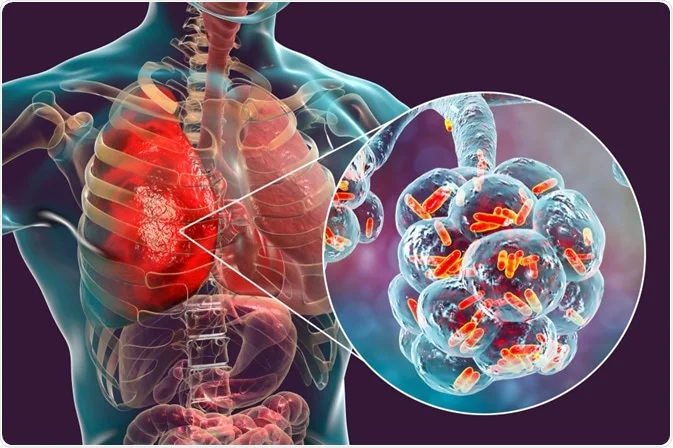Community-acquired bacterial pneumonia (CABP) remains a significant health concern globally, affecting millions of individuals annually. This article delves into the critical aspects of CABP, including its causes, symptoms, diagnosis, treatment options, and effective prevention strategies. We aim to provide a comprehensive resource that not only informs but also empowers individuals and healthcare professionals to take proactive measures against this widespread illness.

What is Community-Acquired Bacterial Pneumonia?
Community-acquired bacterial pneumonia refers to pneumonia that is acquired outside of a hospital or healthcare setting. It is caused by bacterial pathogens and typically results in the infection of the lungs, leading to inflammation, fluid buildup, and impaired oxygen exchange. Pneumonia can vary in severity, from mild cases that can be managed at home to severe cases requiring hospitalization.
The Pathogens Behind Community-Acquired Bacterial Pneumonia
CABP is caused by several types of bacteria, each with varying degrees of impact on health. The most common pathogens responsible for the condition include:
- Streptococcus pneumoniae: The leading cause of community-acquired bacterial pneumonia, accounting for a large percentage of cases.
- Haemophilus influenzae: A significant pathogen in adults with underlying chronic diseases, such as chronic obstructive pulmonary disease (COPD).
- Mycoplasma pneumoniae: Known as an atypical bacterium, it causes milder forms of pneumonia, often referred to as “walking pneumonia.”
- Chlamydia pneumoniae: Another atypical pathogen responsible for mild to moderate cases of CABP.
- Legionella pneumophila: A less common but severe pathogen, especially in immunocompromised individuals.
Other potential bacterial causes include Staphylococcus aureus, including methicillin-resistant Staphylococcus aureus (MRSA), and Moraxella catarrhalis.
Symptoms of Community-Acquired Bacterial Pneumonia
The symptoms of CABP can range from mild to severe and are often similar to other respiratory infections. Common symptoms include:
- Fever and chills: A hallmark sign of infection, with high fever often occurring in bacterial cases.
- Cough: Persistent and often productive, with sputum that may be yellow or green in color, indicating bacterial infection.
- Shortness of breath: Difficulty breathing, particularly with exertion, can signal lung involvement.
- Chest pain: Sharp, stabbing chest pain that worsens with coughing or deep breathing.
- Fatigue and weakness: Individuals may feel excessively tired and weak, even after minimal activity.
- Nausea and vomiting: These gastrointestinal symptoms are less common but can occur in severe cases.
It is essential to seek medical attention if these symptoms appear, as prompt treatment can significantly improve outcomes.
Diagnosing Community-Acquired Bacterial Pneumonia
Diagnosing CABP typically involves a combination of clinical evaluation, patient history, and diagnostic tests. The following methods are commonly used:
- Physical Examination: A thorough physical exam, including auscultation of the lungs, helps to identify abnormal lung sounds, such as crackles or wheezing, indicative of pneumonia.
- Chest X-ray: One of the most important diagnostic tools, as it can confirm the presence of infection in the lungs and rule out other conditions.
- Blood Tests: These may include complete blood count (CBC) to assess white blood cell counts, and blood cultures to identify the specific bacterial pathogen.
- Sputum Culture: A sample of mucus or sputum is tested to identify the bacteria causing the infection.
- Pulse Oximetry: Measures blood oxygen levels to determine how well the lungs are oxygenating the blood.
- CT Scan: In more complicated cases, a CT scan may be used for better visualization of lung abnormalities.
Treatment Options for Community-Acquired Bacterial Pneumonia
Effective treatment of CABP depends on the severity of the illness, the patient’s overall health, and the specific bacteria causing the infection. Common treatment strategies include:
Antibiotic Therapy
Antibiotics are the cornerstone of treatment for bacterial pneumonia. The choice of antibiotics depends on the pathogen identified, but typical first-line treatments include:
- Macrolides (e.g., azithromycin) for Mycoplasma pneumoniae or Chlamydia pneumoniae infections.
- Beta-lactams (e.g., amoxicillin) for Streptococcus pneumoniae and Haemophilus influenzae.
- Fluoroquinolones (e.g., levofloxacin) for patients with co-existing conditions or resistant pathogens.
- Cephalosporins (e.g., ceftriaxone) may be used for more severe infections or those requiring hospitalization.
Hospitalization
Severe cases of CABP, particularly in older adults or those with underlying conditions, may require hospitalization. In such cases, intravenous antibiotics and supplemental oxygen therapy are often needed. Patients may also require mechanical ventilation if respiratory failure occurs.
Adjunctive Therapies
In addition to antibiotics, certain adjunctive treatments may be prescribed to support recovery:
- Antipyretics (e.g., acetaminophen) to reduce fever.
- Expectorants to help clear mucus from the lungs.
- Bronchodilators for patients with underlying respiratory conditions like asthma or COPD.
Surgery
In rare cases, surgery may be needed to remove infected lung tissue or treat abscesses that result from severe pneumonia.
Preventing Community-Acquired Bacterial Pneumonia
While it is not always possible to prevent CABP, certain strategies can significantly reduce the risk of infection:
Vaccination
Vaccines are a key preventive measure against some of the most common causes of CABP. Vaccines available include:
- Pneumococcal Vaccine: Protects against Streptococcus pneumoniae, the most common cause of bacterial pneumonia.
- Haemophilus influenzae Vaccine: Especially important for children and individuals with certain chronic conditions.
- Influenza Vaccine: Though it does not prevent bacterial pneumonia directly, it reduces the risk of developing secondary bacterial infections after the flu.
Good Hygiene Practices
- Hand Hygiene: Regular handwashing with soap and water can prevent the spread of respiratory pathogens.
- Respiratory Hygiene: Covering the mouth and nose with a tissue or elbow when coughing or sneezing can prevent the spread of bacteria.
- Avoid Smoking: Smoking damages lung tissue, making the lungs more susceptible to infection.
Lifestyle and Health Management
Maintaining a healthy lifestyle plays an important role in reducing the risk of pneumonia:
- Regular Exercise: Helps to strengthen the immune system and improve lung function.
- Healthy Diet: A balanced diet rich in vitamins and minerals can support immune health.
- Avoiding Exposure to Sick Individuals: Limit close contact with individuals suffering from respiratory infections.
- Manage Chronic Conditions: Effectively managing conditions like diabetes, heart disease, and COPD can reduce the risk of complications.